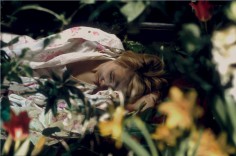REYNOLD REYNOLDS
레이 놀드 레이놀즈
Рейнольд Рейнольдс
secret life

source: vimeo
Secret Life is the first of the Secrets Trilogy; a cycle exploring the imperceptible conditions that frame life and is followed by Secret Machine (2009) and Six Easy Pieces (2010)
Secret Life portrays a woman trapped in an apartment with a life of its own. Transcending the narrative horizons of human desire, the film visits upon us a glimpse of a shared and sacred reality. A work that defies the ultimate metaphysical taboos of temporality by combining novel technique with intrepid philosophical vision; and daring to present that which is seldom, if ever, portrayed in any artistic medium.
Impossibilities are made possible through Reynolds’ signature aesthetic, a lens that can fill one with reverence for the mundane.
Have you ever wondered what time sees, experiences? Without mortal assumptions about time, the occupant of the apartment is no longer limited even to unique location, but here, seen through the eye of time, space itself is now become alive. Without the context of space and time, the woman’s mind collapses and neglects the organization of her experience, leaving her only with sensations. The viewer may ask: Is it her mind or is it time itself that creates the uncontrolled and uncontrollable environment? The work suggests that all living things are endowed with consciousness, meaning all living things have awareness. While the space increases in its activity, the woman becomes an ever more passive element in her world. She moves at a mechanical speed and her mind is like a clock whose hands pin the events of her life to the tapestry of time, all the while, the truth is transcendentally reflected in the mechanical eye of the camera. Her thoughts escape her and come to life, growing like the plants that inhabit the space around her: living, searching, feeling, breathing and dying.
.
.
.
.
.
.
.
.
source: art-actionorg
Reynold Reynolds was born in Alaska. For ten years he has been working primarily with 16mm and Super 8mm film as an art medium. He has created installations, documentaries, found footage works, made narrative and experimental films, and developed a common film grammar based on transformation, consumption and decay. He has participated in numerous art exhibitions, including the 4th Berlin Biennale for Contemporary Art, the P.S.1 Contemporary Art Center and Kunst-Werke Berlin Institute for Contemporary Art, Focus Istanbul at Martin Gropious Bau and Destroy, She Said at Julia Stoschek Collection. His works have been shown in many international film festivals and have won numerous awards including from the Black Maria, the Southwest and the Sundance Film Festival. In 2003 Reynold Reynolds was awarded the John Simone Guggenheim Memorial Foundation Fellowship and in 2004 he was invited to The American Academy in Berlin with a studio at Kunstlerhaus Bethanien. Reynold lives in New York City and in Berlin.
.
.
.
.
.
.
.
source: we-need-money-not-art
秘密的机器,由Reynold Reynolds创作,是未来身体 的一部分,里面结合了很多科技,并且借用一个人体模型。这个电影的参与者是自我矛盾的,研究人体,测量身体各部分的反映,之后将她比作时空的组合。这个场景的灵感来自Muybridge对人体和动物的运动的研究。
.
.
.
.
.
.
.
source: yishushijie
(丁宁|文)女孩如金鱼一般躺在鱼缸中,科学家亲自用手测量她的呼吸频率,还为她戴上透明的纯氧面罩,像极了濒临灭绝的海洋生物正在接受来自人类的最后拯救。在录像作品《神秘机器》(Secret Machine )中,女孩的身体实验成为了美国录像艺术家雷诺·雷诺兹(Reynold Reynolds)对迈布里奇动作研究的延续。电影发明先驱爱德沃德·迈布里奇(Eadweard Muybridge)曾拍下人类史上第一组奔跑的马匹照片并分析其动作连续性,倾其一生探讨人体与动物的运动瞬间,用艺术创作的方式推动了基于时间与空间的科学实验。随后,杜尚(Marcel Duchamp)在《下楼的裸女,2 号》(Nude Descending a Staircase, No.2 )中尝试用交叠影像制造视觉幻象,在同一个平面中表现时间的更迭。雷诺兹认为,时间和动作都与变化相关,而世界上不存在没有变化的生命。他更倾向于去描绘时间概念的存在,而非具体可感知的事物。在捕捉这种时间性上,摄影总是显得力不从心,于是录像成了探讨这一问题的终极媒介。
.
.
.
.
.
.
.
source: hkwde
Reynold Reynolds setzt in seinen Filmen an der Schnittstelle von Wissenschaft und Kunst an. In seiner neuesten Arbeit, dem bei Labor Berlin erstmal als 3-Kanal-Videoinstallation in seiner Gesamtheit zu sehenden Zyklus „The Secrets Trilogy““, forscht er den physikalischen Unterströmungen der menschlichen Existenz nach.
Der als Weltpremiere gezeigte, dritte Teil trägt den Titel „Six Easy Pieces“ (2010) und basiert auf dem Buch „Six Easy Pieces: Essentials of Physics explained by its most brilliant teacher“ des legendären Physikers Richard P. Feynman. Reynolds (de)konstruiert Film als perfekte Synthese von Kunst und Technologie im Rückbezug auf eine Zeit, als Künstler und Naturwissenschaftler ähnliche Anliegen hatten und nicht selten eine Personalunion bildeten.
„Secret Machine“ (2009) nimmt die berühmten fotografischen Bewegungsexperimente von Eadweard Muybridge zum Ausgangspunkt, um über den radikalen Wandel im Verständnis von Zeit und Raum zu reflektieren, der aus dem Glauben an die wissenschaftliche Vermessung des Menschen herrührt.
In „Secret Life“ (2008) ist eine Frau gefangen in einem Appartement voller Pflanzen. Sie bewegt sich in einer mechanischen Geschwindigkeit, dabei funktioniert ihr Geist wie eine Uhr, deren Zeiger ihr Leben an das Gewebe der Zeit knüpfen.
Reynold Reynolds, geboren 1966 in Alaska, kam 2004 auf Einladung der American Academy nach Berlin. 2009 erhielt er den Distinction Award der transmediale.
In Kooperation mit der transmediale
Die Ausstellungsreihe Labor Berlin ist der Kreativität und dem Potenzial der internationalen Künstler gewidmet, die die Stadt als neue Heimat gewählt haben. Gezeigt werden junge Künstler, Newcomer und Wiederentdeckungen. Die Ausstellungen werden begleitet von einer Publikationsreihe sowie einer Künstleredition.
.
.
.
.
.
.
.
source: moviedaumnet
미국 알라스카 출생. 그는 변화와 소비 그리고 부패돼가는 과정에 대해 많은 관심을 가지고 설치미술, 다큐멘터리, 실험영화 등 에서 그만의 색깔로 작업을 하였다. 그의 많은 실험적 성격이 강한 작품들은 관객들로 하여금 불쾌감과 경악을 불러일으키기로 유명하다.
.
.
.
.
.
.
.
source: oddstreamorg
The Secrets Trilogy verkent de onmerkbare voorwaarden die het leven vormgeven. De trilogie -bestaande uit Six Easy Pieces, Secret Life en Secret Machine- wordt vertoond als video-installatie waar je doorheen kunt lopen. Reynold Reynolds deconstrueert film als de perfecte samenstelling van kunst en technologie waar het proces van het vastleggen, opnemen en het opnieuw tot leven brengen een grote rol speelt. Het werk verbindt kunst en wetenschap en is gericht op ruimte en tijd. De trilogie verwijst naar een romantische periode in de geschiedenis waarin kunstenaars en wetenschappers één waren en dezelfde zorgen hadden (zoals gepersonifieerd in Leonardo Da Vinci). Onafhankelijk van welk tafereel de kijker ziet, zijn de filmbeelden constant van ongelooflijke schoonheid, wat The Secrets Trilogy esthetisch een lust voor het ogen maakt.

